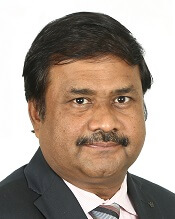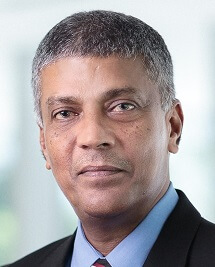The building automation market in Asia is not a homogeneous entity. Market competition, demands, level of openness and price sensitivity vary from country to country, which presents different challenges for smart building technology providers.
The building automation market in Asia is not a homogeneous entity. Market competition, demands, level of openness and price sensitivity vary from country to country, which presents different challenges for smart building technology providers.
In terms of market maturity, Asia has not achieved the same level as Europe and North America, where both building construction and performance are highly regulated by stringent standards, said Elangovan Karuppiah, CEO of the Middle East/Asia Pacific Region at
Siemens Building Technologies. "In the Asian markets, the cost of construction tends to play a bigger role than lifecycle cost. Nonetheless there is a shift in the Asian markets, whereby a greater focus is being placed on the integration of IoT into the entire lifecycle of a building,” he said.
“On the other hand, the ‘young age’ of Asia’s markets have an advantage of learning
 Shrinivas Chebbi, President,
Shrinivas Chebbi, President,
Eco Buildings and Partner,
Schneider Electric India
from the developmental challenges and successes of their American and European counterparts,” said Shrinivas Chebbi, President of Eco Buildings and Partner at Schneider Electric India. However, because of rising energy prices and strict building codes, the Asian market demand is being driven by more affordable building automation systems (BAS) for medium- and smaller-sized buildings.
 Wang Ziquan, Director of Controls
Wang Ziquan, Director of Controls
Products, Building Technologies and
Solutions, Johnson Controls
Market maturity level varies within Asia as well. “Formative markets, such as emerging countries in Southeast Asia, are investing heavily in new construction. Under such rapid expansion, installers need an efficient way to deploy basic building management infrastructure, and facility managers need a building management system that is easy to use and learn as they are likely to be less experienced. In mature markets, building owners and users are pushing for better energy management and sustainability,” said Wang Ziquan, Director of Controls Products for Building Technologies and Solutions at
Johnson Controls. “However, in general, the direction is toward smart, efficient, human-centric systems,” he added.
Market status in different countries
 Bryan Montany,
Bryan Montany,
Research Analyst,
Security and Building Technologies,
IHS Markit
According to Bryan Montany, Research Analyst at
IHS Markit’s Security and Building Technologies group, the Chinese market for building automation equipment is the single largest market in Asia and is projected to grow to over $500 million by 2021, with a growth rate higher than regional average. “Growing competition from domestic suppliers that are offering lower-cost solutions is also impacting the market. However, private investment into real estate projects remains strong and public funding for certain types of projects, such as airports, is accelerating,” he said.
India, Montany continued, is forecast to be the fastest growing market in APAC, with revenues projected to grow at a CAGR nearly double the regional average through 2021. Even though surging construction rates and a push for energy efficiency will keep driving growth in the country, “the Indian market is very conscious of price and tends to prefer the least expensive hardware available, which represents a potential barrier for international manufacturers,” said Montany.
Commenting on the market in Japan, Montany said that it has been relat ively flat over the past few years, but slow growth is anticipated between 2018 and 2020, with the coming of the 2020 Summer Olympics in Tokyo. While investment to support the games will lead to this growth and make hospitality the fastest growing end-user vertical, a majority of overall revenues will still be generated by retrofits, he said, as scheduled urban renewal projects in major cities will contribute to a marginal increase of equipment sold to support new construction projects.
“However, Japan will remain a difficult market for international vendors to compete in, as the competitive environment for the industry is dominated by a single domestic supplier,” said Montany. With the exception of Japan and South Korea, most APAC countries “have extremely competitive markets that are open to international entrants as a majority of building automation products are imported from foreign manufacturers,” he said.
Analyzing how the Asian market is different from other regions, Wang said a major difference lies in that many Asian cities have high population density, which requires different architectural styles and HVAC designs from their European and North American counterparts. Wang also mentioned that within Asia, customers have different demands for facility operation practices and ways BAS data are presented, including the amount of graphics and preferences for a system view or a floor plan view. “As such, solution providers have to strike the right balance in developing one-size-fits-all or market-specific products,” he said.
Transition to advanced products
 Elangovan Karuppiah, CEO,
Elangovan Karuppiah, CEO,
Middle East/Asia Pacific Region,
Siemens Building Technologies
BASs comprise of sensors, controllers and actuators to automatically monitor and control a building’s HVAC system. Sensors are utilized to read measurements of environmental conditions such as temperature and humidity. Data is then transmitted to controllers to be aggregated and analyzed, and controllers in turn transmit commands to actuators, which change the settings of HVAC systems to achieve the desired climate in a space.
As emerging economies like China and India have seen rapid growth in commercial building constructions, Montany said that many BASs installed in buildings in both countries come with higher quantities of less sophisticated sensors and controllers than their counterparts in other regions. However, he said, the trend is beginning to change, as building owners are recognizing the value of investing in more expensive and complex sensors and controllers. “Mid-market projects in these countries are transitioning to install more configurable and programmable controllers in their system. These controllers are more expensive and offer more customization and flexibility than fixed-function controllers, so this transition will fuel market growth,” he said.